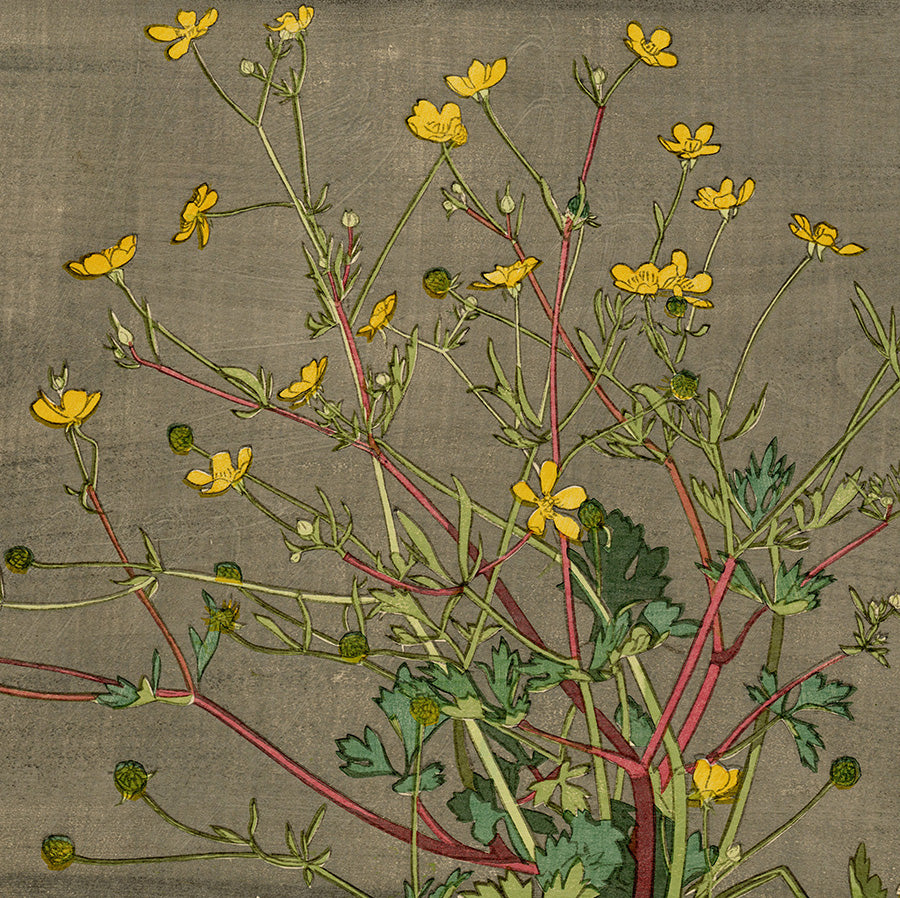 Sold
Sold
Buttercups
HAZAMA, Inosuke
Boutons d’Or (original French title)キンポウゲ (Japanese title, as recorded byThe National Museum of Modern Art, Tokyo) Color woodcut on Japan wove pape...
View full detailsInosuke Hazama (硲 伊之助) was born in Tokyo in 1895. He dropped out of Keio University to study with Oshita Tojiro (大下藤次郎) at his Japan Watercolor Society (日本水彩協会), all the while taking French lessons at night. He exhibited in the Fyuzankai Exhibition (フュウザン会) of 1912, and the Nika or Nikakai Exhibitions (Second Section Association) from 1914 to 1918 (二科会). He lived and studied in France from 1921 to 1929 and again in the years 1933-35. During this second sojourn, he studied with Henri Matisse. A member of various artist’s groups, Hazama was appointed director of the art section of the Bunka Gakuin School (文化学院) in 1941 and to assistant professor in Western Style painting, at the Tokyo School of Fine Arts in 1944 (today known as Tokyo University of the Arts, 東京藝術大学). Hazama’s studio on Hongo campus is said to have burned down during an air raid on Tokyo in 1945. While he seems to have returned to France a few more times, perhaps at the behest of his French wife, he eventually did live out his years in Japan. Having lost interest in teaching fine art, he turned his attention to pottery later in life. He moved away from the capital to live Kaga, Ishikawa prefecture, and devoted himself to creating Katuni ware.
As would be expected from a multi-cultural artist, influenced by extensive travel, Hazama’s work is diverse in nature and style. Without even touching on his work as a ceramist, one must mention that he was both a painter and a printmaker. His style evolved from one in keeping with Japanese artistic traditions, to one which soon encompassed Western influences. At times Matisse’s influence is very palpable in his compositions. In addition to painting regularly, he made color woodcuts, lithographs, and illustrations. (His name is can also be spelled Inozuke Hazama)
 Sold
Sold
Boutons d’Or (original French title)キンポウゲ (Japanese title, as recorded byThe National Museum of Modern Art, Tokyo) Color woodcut on Japan wove pape...
View full detailsPlease sign up for our newsletter
Email: info@armstrongfineart.com
Phone: 773-887-6776
1200 West 35th Street, #186
Chicago, IL 60609
Copyright © 2025 Armstrong Fine Art.
Development by Alo Agency. Powered by Shopify
